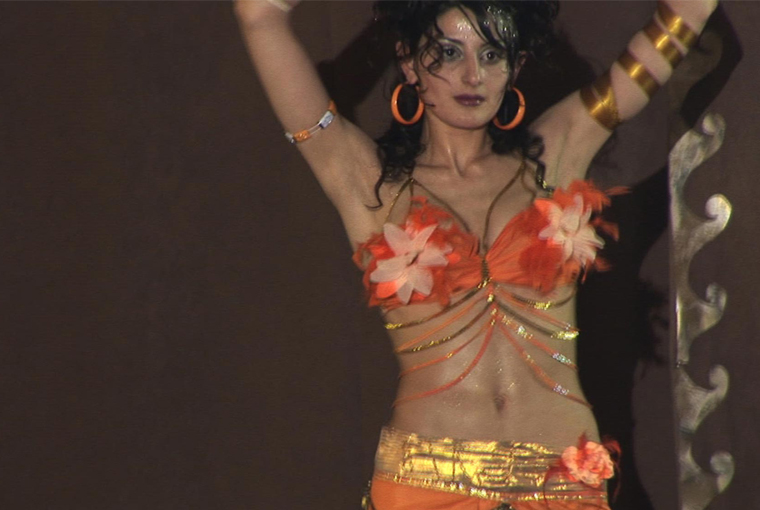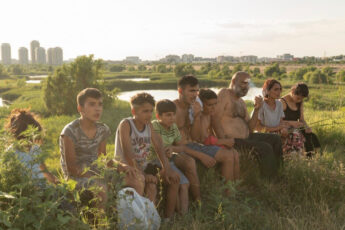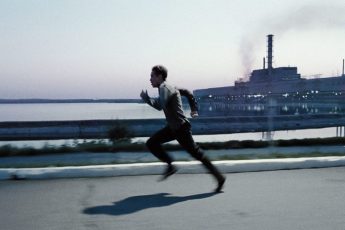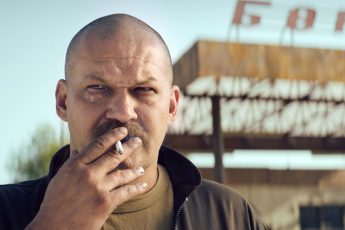A Brief Look at Imprisoned Women
Maria Yatskova’s Miss Gulag (2007)
Vol. 108 (October 2020) by Antonis Lagarias
One could argue that filming in prisons is an act at the limit of social taboos. Regardless of the way one conceives prisons, as institutions for rehabilitation or places of punishment, we would tend to agree that as structures, prisons exist outside the social fabric. This is not only true in a spatial sense, as prisons tend to be situated outside the city, but also in the sense that the flow of information from inside the prisons to the rest of society is strictly controlled. For the most part, what happens in prisons is transmitted either through stories by ex-prisoners or articles by their lawyers. In perhaps the most extreme case in the Western hemisphere, in so-called Special Administrative Measures prisons in the US (SAMs), those who are inside, their families and their lawyers are legally forbidden from communicating any kind of information on the prison’s operation, a ban that includes details as trivial as what meals are served on a given day. As far as visual information goes, the public eye still has limited access to prisons. Certain areas are always off limits, even in the case of visiting journalists or state officials. In a way, prisons are structured in layers, with a completely hidden core followed by carefully controlled areas where transparency is partly tolerated. This lack of visual representation is an uncharted area for many documentary filmmakers that finally are able to get authorization to shoot inside prisons. Thus, a camera entering a prison, and especially a crew entering a prison to shoot a documentary, could be seen as an act that can, whether its effect is intentional or unintentional, reveal what was unseen, the reality of what happens when ‘justice is served’.
Miss Gulag is a film on the Siberian camp UF-91/9, a prison for female offenders. In 2007, Maria Yatskova’s camera enters the prison camp to tell the story of three women: Yulia, Tatianna and Natasha. Charged at a young age for assault or drug-related crimes, they come of age inside the camp. The interviews with the director about their crimes which took place in the 90s reveal a chaotic and violent society where the survival of the fittest is the norm. While that hints at the sudden rupture from a failing socialist system to a cruel capitalist one, the film insists on the role of men in these crimes. Tatianna assaults the owner of a local gas station to protect her brother, and Natasha attacks the drug dealer who had sold a lethal dose to her lover. But although men are the catalyst for these acts, they remain absent for the rest of the film. Even though some prison guards are male, Yatskova never takes a direct interest in them, interviewing exclusively female guards and including images of men only in shots outside the camp. Thus, we are inclined to see this prison not only outside social life but also outside female-male dynamics (bar the metaphor of female imprisonment inside a male society).
This element of the documentary is concretized in the contest of Miss Spring (where the film’s title derives from). Organized once per year to raise the spirits of the prisoners, Miss Spring is a beauty contest structured like any typical contest: there is a stage, an audience, and judges. However, while beauty contests are often a celebration of sexual objectification and male fantasies, inside the camp the male gaze is nowhere to be found. The only male guard stays silent and is almost invisible in the shots (even though he is one of the three judges). The contestants themselves don’t seem to follow any kind of beauty standards. They propose exaggerated, incoherent, sexy, and funny costumes that seem rather personal and are addressed to their fellow female audience as a joke, game, or tease. One could see this contest as one of the rare moments of personal freedom inside the camp, enhanced as it is through its collective experience. In that sense, this event is a reversal of the original conception of beauty contests, going beyond an imitation of social life and taking the role of an inauguration event that constitutes a new community with its own traditions. Necessarily, this event unifies the prison, temporarily blurring the limits between guards and prisoners (at least as shown in the film) and leaving an emotional mark on its participants, to the extent that Natasha, two years after her release from the camp, still longs for the Miss Spring contest and asks for a special permit to return to the prison to participate one last time.
The visualization of this event, which is seen as a reinvention of communal life, is the strongest part of this documentary. On the other hand, one could question the choice of structuring the film’s narrative around these three protagonists. If the documentary aims to tell the story of the camp’s community, then we should consider the representational value of these ‘heroes’. Natasha is already released at the time of shooting, Tatianna obtains her parole on camera and Yulia will soon be released. All three individuals are quite young, charismatic, friendly and knowledgeable, making them easily relatable. In a way they are the ‘success stories’ of the camp: optimistic fighters in a society that is falling apart. However, as far as the camp experience goes, what kind of unified experience do these three share with the old toothless lady prisoner we see briefly in the background? Should we assume that these three prisoners accurately reflect this community of women prisoners? As gray, sad and grim as the documentary may be, it still projects an uplifting image. From the friendly guards, who radiate a conscience bordering on social duty, to the prisoners ‘reevaluating’ their choices during their confinement, we are inclined to think that once again we see only what we are allowed to see, what we can truly handle.
To counterbalance this protagonist-oriented structure, the director allows some contrasting elements to emerge through her aesthetic approach. Certain images look raw and allow space for ‘accidents’. A woman’s head shot through a door looking curiously towards the interview, or a weird fog that seems to inhabit the exterior background, are peripheral elements: here the camera reveals itself to be an outside intruder to the secluded space of the prison. Or, the surreal apocalyptic background of the prison’s surroundings as a displaced image of the camp experience as a whole. After all, the camp itself is never situated against or put in relation to anything else. It seems to be nowhere, or perhaps where nothing else is. However, intriguing as they may be, these elements are not enough to challenge the overall comfort of following relatable prisoners.
Having cameras inside prisons is important in itself. It can be an act potentially destabilizing the normality of a society by revealing what was unseen before. But how this can be achieved is a difficult question. A simple visual documentation of prisons and of prisoners’ stories is far from sufficient to challenge the core of how we perceive the penal system. Dystopian images from the worst modern-day prisons, the refugee camps built throughout Europe in the last five years, circulate freely to every possible viewer. Still, official state policies remain unchanged.




Leave a Comment